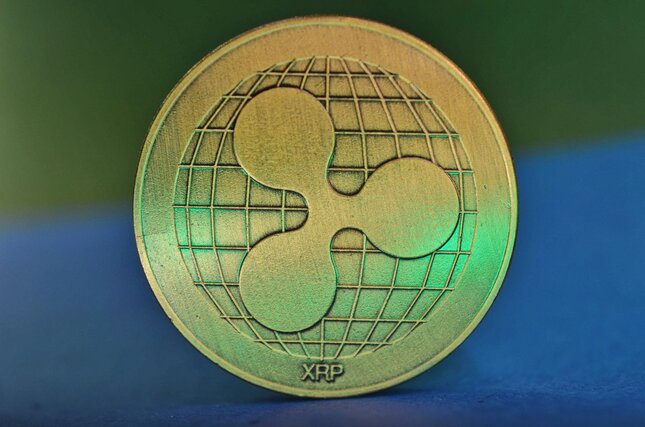- USD/CAD consolidates in a range near a one-week low amid mixed fundamental cues.
- Hotter Canadian CPI tempers bets for a bigger BoC rate cut and underpins the CAD.
- Rebounding US bond yields revive USD demand and offer some support to the pair.
The USD/CAD pair finds some support near the mid-1.3900s, or a one-week low touched during the Asian session on Wednesday and for now, seems to have stalled this week's retracement slide from the highest level since May 2020. Spot prices, however, struggle to gain any meaningful traction, warranting some caution for bullish traders amid mixed fundamental cues.
Data published on Tuesday showed that Canada's annual inflation rate rose more than expected, to 2.0% in October and forced investors to scale back their bets for a big rate cut by the Bank of Canada (BoC) in December. This, in turn, is seen offering some support to the Canadian Dollar (CAD) and acting as a headwind for the USD/CAD pair. That said, subdued Crude Oil prices keep a lid on any meaningful appreciation for the commodity-linked Loonie.
Despite the prospect of supply disruptions from an escalation in the Russia-Ukraine conflict, signs of a build in US stockpiles fail to assist Crude Oil prices to build on a two-day-old recovery from over a two-month low touched on Monday. In fact, the American Petroleum Institute (API) reported that US inventories grew much more than expected, by 4.75 million barrels in the week to November 15, pointing to increased supply in the world’s biggest oil producer.
Apart from this, the emergence of some US Dollar (USD) dip-buying should limit any meaningful downside for the USD/CAD pair. Investors now seem convinced that US President-elect Donald Trump's policies will spur economic growth and rekindle inflationary pressures. This could restrict the Federal Reserve (Fed) from cutting interest rates, which, in turn, triggers a fresh leg up in the US Treasury bond yields and helps revive the USD demand.
Moving ahead, investors now look forward to speeches by influential FOMC members for cues about the future rate-cut path. This will play a key role in driving the US bond yields and the USD later during the North American session. Furthermore, traders will take cues from the official US Oil inventory data, which should influence the black liquid and contribute to producing short-term trading opportunities around the USD/CAD pair.
Bank of Canada FAQs
The Bank of Canada (BoC), based in Ottawa, is the institution that sets interest rates and manages monetary policy for Canada. It does so at eight scheduled meetings a year and ad hoc emergency meetings that are held as required. The BoC primary mandate is to maintain price stability, which means keeping inflation at between 1-3%. Its main tool for achieving this is by raising or lowering interest rates. Relatively high interest rates will usually result in a stronger Canadian Dollar (CAD) and vice versa. Other tools used include quantitative easing and tightening.
In extreme situations, the Bank of Canada can enact a policy tool called Quantitative Easing. QE is the process by which the BoC prints Canadian Dollars for the purpose of buying assets – usually government or corporate bonds – from financial institutions. QE usually results in a weaker CAD. QE is a last resort when simply lowering interest rates is unlikely to achieve the objective of price stability. The Bank of Canada used the measure during the Great Financial Crisis of 2009-11 when credit froze after banks lost faith in each other’s ability to repay debts.
Quantitative tightening (QT) is the reverse of QE. It is undertaken after QE when an economic recovery is underway and inflation starts rising. Whilst in QE the Bank of Canada purchases government and corporate bonds from financial institutions to provide them with liquidity, in QT the BoC stops buying more assets, and stops reinvesting the principal maturing on the bonds it already holds. It is usually positive (or bullish) for the Canadian Dollar.
Information on these pages contains forward-looking statements that involve risks and uncertainties. Markets and instruments profiled on this page are for informational purposes only and should not in any way come across as a recommendation to buy or sell in these assets. You should do your own thorough research before making any investment decisions. FXStreet does not in any way guarantee that this information is free from mistakes, errors, or material misstatements. It also does not guarantee that this information is of a timely nature. Investing in Open Markets involves a great deal of risk, including the loss of all or a portion of your investment, as well as emotional distress. All risks, losses and costs associated with investing, including total loss of principal, are your responsibility. The views and opinions expressed in this article are those of the authors and do not necessarily reflect the official policy or position of FXStreet nor its advertisers. The author will not be held responsible for information that is found at the end of links posted on this page.
If not otherwise explicitly mentioned in the body of the article, at the time of writing, the author has no position in any stock mentioned in this article and no business relationship with any company mentioned. The author has not received compensation for writing this article, other than from FXStreet.
FXStreet and the author do not provide personalized recommendations. The author makes no representations as to the accuracy, completeness, or suitability of this information. FXStreet and the author will not be liable for any errors, omissions or any losses, injuries or damages arising from this information and its display or use. Errors and omissions excepted.
The author and FXStreet are not registered investment advisors and nothing in this article is intended to be investment advice.
Recommended content
Editors’ Picks

GBP/USD holds gains near 1.2700 after UK inflation data
GBP/USD holds the latest uptick near 1.2700 in the European session on Wednesday. The data from the UK showed that the annual inflation, as measured by the change in the CPI, rose to 2.3% in October from 1.7% in September, supporting Pound Sterling.

EUR/USD remains below 1.0600 amid safe-haven flows, awaits ECB Lagarde's speech
EUR/USD faces challenges due to safe-haven flows amid escalating Russia-Ukraine conflict. Traders anticipate that the incoming Trump administration's pro-inflationary policies could support the US Dollar.

Gold looks to test offers at $2,660 amid cautious optimism
Gold price stays on the front foot early Wednesday, looking to regain the $2,650 barrier as the road to recovery extends for the third straight day. Traders now await the upcoming speeches from US Fed policymakers and Nvidia’s earnings report amid lingering geopolitical concerns between Russia and Ukraine.

XRP on the verge of a rally to $1.96 as investors maintain bullish sentiment
Ripple's XRP exchange reserve decline and open interest growth reveal strong bullish sentiment among investors. XRP's estimated leverage ratio shows investors are taking high leverage risk, and a correction often ensues when the ratio peaks.

How could Trump’s Treasury Secretary selection influence Bitcoin?
Bitcoin remained upbeat above $91,000 on Tuesday, with Trump’s cabinet appointments in focus and after MicroStrategy purchases being more tokens.

Best Forex Brokers with Low Spreads
VERIFIED Low spreads are crucial for reducing trading costs. Explore top Forex brokers offering competitive spreads and high leverage. Compare options for EUR/USD, GBP/USD, USD/JPY, and Gold.